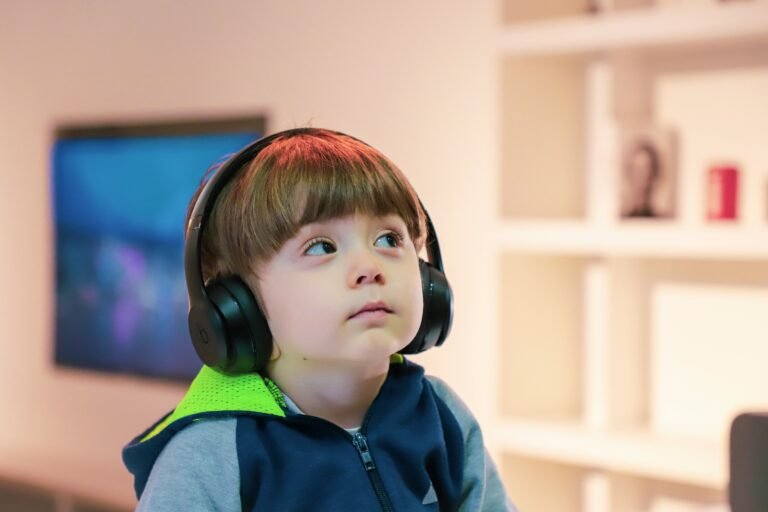Understanding Autism Spectrum Disorder (ASD)
Autism Spectrum Disorder (ASD) is a complex neurological and developmental condition that begins early in childhood and affects a person’s ability to communicate, interact socially, and engage in repetitive behaviors or restricted interests. The term “spectrum” reflects the wide range of challenges and strengths possessed by each person with autism. No two individuals with ASD are alike; they exhibit unique patterns of behavior and levels of severity, making personalized support and interventions crucial.
ASD influences various aspects of development, including cognitive functions, emotional regulation, social skills, and language abilities. These differences are due to variations in brain structure and function, affecting how individuals process information, perceive the world, and interact with others. Understanding ASD requires a multidisciplinary approach, incorporating insights from neuroscience, psychology, education, and sociology to address the diverse needs of those affected.
Neurological Basis of ASD
The neurological underpinnings of ASD involve atypical brain development and connectivity. Research has identified differences in how neurons communicate and organize in the brains of individuals with autism. These differences can impact several brain systems responsible for processing sensory information, language, emotions, and executive functions.
Brain Structure and Function
- Neuronal Connectivity: Studies using imaging techniques like functional MRI have shown that some individuals with ASD have altered neural connectivity. There may be overconnectivity in certain brain regions and underconnectivity in others, affecting information processing speed and efficiency.
- Mirror Neuron System: This system is associated with the ability to imitate and understand others’ actions and intentions. Alterations in the mirror neuron system may contribute to the social and communication difficulties observed in ASD.
- Amygdala and Emotional Processing: The amygdala plays a crucial role in processing emotions. Differences in amygdala size and activity may influence how individuals with ASD perceive and respond to social and emotional cues.
Genetic and Environmental Factors
- Genetic Influences: Genetics play a significant role in ASD. Multiple genes are involved, and mutations or variations can increase the likelihood of developing autism. However, no single gene causes ASD; it results from complex interactions among various genetic factors.
- Environmental Contributors: Environmental factors during prenatal and early postnatal development can interact with genetic predispositions. These may include advanced parental age, low birth weight, or exposure to certain substances during pregnancy.
Early Signs and Symptoms
Identifying ASD early allows for timely interventions that can improve outcomes significantly. Symptoms typically appear by the age of two or three, although subtle signs may be noticeable earlier.
Communication Challenges
- Delayed Speech and Language Development: Children with ASD may not babble or use gestures by 12 months or speak single words by 16 months.
- Nonverbal Communication Difficulties: They might avoid eye contact, have limited facial expressions, or not understand body language and gestures.
- Echolalia: Repeating words or phrases verbatim without understanding their meaning is common.
Social Interaction Difficulties
- Lack of Shared Interest: Children may not show objects to others or engage in joint attention activities.
- Difficulty Understanding Social Cues: Recognizing others’ feelings, intentions, or social norms can be challenging.
- Preference for Solitude: Some may seem indifferent to others or prefer to play alone.
Repetitive Behaviors and Restricted Interests
- Stereotyped Movements: Repetitive motions like hand-flapping, rocking, or spinning.
- Insistence on Routines: Distress can occur with changes in routines or environments.
- Fixated Interests: Intense focus on specific topics or objects, often to the exclusion of other activities.
Sensory Sensitivities
- Over- or Under-Reactivity: Unusual responses to sensory input, such as sounds, lights, textures, or smells.
- Sensory Seeking Behaviors: Engaging in activities that provide strong sensory feedback, like deep pressure or spinning.
Diagnosis of Autism Spectrum Disorder
Diagnosing ASD involves a comprehensive evaluation by professionals experienced in developmental disorders.
Diagnostic Criteria
The Diagnostic and Statistical Manual of Mental Disorders, Fifth Edition (DSM-5), outlines specific criteria for ASD:
- Persistent Deficits in Social Communication and Social Interaction: Difficulties in social-emotional reciprocity, nonverbal communicative behaviors, and developing, maintaining, and understanding relationships.
- Restricted, Repetitive Patterns of Behavior, Interests, or Activities: At least two types of repetitive behaviors, insistence on sameness, highly restricted interests, or hyper-/hyporeactivity to sensory input.
Assessment Process
- Developmental Screening: Regular screenings during well-child visits help identify developmental delays.
- Comprehensive Diagnostic Evaluation: Includes behavioral observations, parental interviews, and standardized testing.
- Interdisciplinary Approach: Involvement of psychologists, neurologists, speech-language pathologists, and other specialists.
Age of Diagnosis
While ASD can be reliably diagnosed by age two, many children are diagnosed later. Early diagnosis is critical for accessing early intervention services that can improve social, communication, and learning skills.
Prevalence and Demographics
Statistical Overview
- Global Prevalence: ASD affects individuals worldwide, across all racial, ethnic, and socioeconomic groups.
- United States Statistics: The Centers for Disease Control and Prevention (CDC) estimates that about 1 in 44 children in the U.S. is identified with ASD.
- Increasing Rates: The rise in prevalence may be due to broader diagnostic criteria, improved awareness, and better diagnostic tools.
Gender Differences
- Male-to-Female Ratio: Boys are about four times more likely to be diagnosed with ASD than girls.
- Diagnostic Challenges in Females: Girls may exhibit different symptoms or better mask their difficulties, leading to underdiagnosis.
- Research Implications: Understanding gender differences is essential for developing tailored assessment tools and interventions.
Types of Autism Spectrum Disorder
Previously, autism was categorized into subtypes, but the DSM-5 consolidated these into a single diagnosis of ASD to reflect the spectrum nature of the condition.
Historical Subtypes
- Autistic Disorder: Characterized by significant language delays, social and communication challenges, and unusual behaviors.
- Asperger’s Syndrome: Individuals with average or above-average intelligence and normal language development but difficulties in social interaction and restricted interests.
- Pervasive Developmental Disorder-Not Otherwise Specified (PDD-NOS): Atypical autism where individuals meet some but not all criteria for autistic disorder.
- Childhood Disintegrative Disorder: Rare condition involving late onset of developmental delays after at least two years of normal development.
Current Classification
The shift to a single ASD diagnosis emphasizes individualized assessment of severity levels:
- Level 1 (Requiring Support): Noticeable impairments without support; difficulties initiating social interactions.
- Level 2 (Requiring Substantial Support): Marked deficits in verbal and nonverbal communication; limited initiation of social interactions.
- Level 3 (Requiring Very Substantial Support): Severe deficits causing significant impairments; minimal response to social overtures.
Autism in Adolescents and Adults
Late Diagnosis
- Reasons for Late Diagnosis: Subtle symptoms, high-functioning individuals, or compensatory strategies can delay recognition.
- Impact of Late Diagnosis: Understanding one’s challenges can provide relief and access to support services.
- Challenges in Adulthood: Difficulties in employment, relationships, and independent living may arise without appropriate support.
Life Transitions
- Education to Employment: Support in transitioning from school to the workforce is critical.
- Independent Living: Skills for self-care, household management, and community engagement are essential.
- Social Relationships: Navigating friendships, romantic relationships, and family dynamics requires ongoing support.
Co-occurring Conditions
- Mental Health Disorders: Higher rates of anxiety, depression, and attention-deficit/hyperactivity disorder (ADHD).
- Physical Health Issues: Sleep disturbances, gastrointestinal problems, and epilepsy are more common.
Intervention and Support Strategies
Early and tailored interventions can significantly improve the quality of life for individuals with ASD.
Behavioral Interventions
- Applied Behavior Analysis (ABA): Uses principles of learning theory to improve socially significant behaviors.
- Pivotal Response Treatment (PRT): Focuses on critical developmental areas like motivation and response to multiple cues.
- Social Skills Training: Teaches appropriate social interactions and understanding of social cues.
Speech and Language Therapy
- Communication Skills: Enhances verbal and nonverbal communication abilities.
- Alternative Communication Methods: Use of sign language, picture exchange communication systems (PECS), or speech-generating devices.
Occupational Therapy
- Sensory Integration: Addresses sensory processing issues to improve daily functioning.
- Fine Motor Skills: Improves hand-eye coordination and the ability to perform tasks like writing or buttoning clothes.
Educational Interventions
- Individualized Education Program (IEP): Customized learning plans in school settings to meet specific needs.
- Special Education Services: Access to resources and support within the educational system.
Pharmacological Treatments
- Medication Management: While no medication cures ASD, certain medications can alleviate specific symptoms like irritability, aggression, or hyperactivity.
- Careful Monitoring: Medications require ongoing assessment for effectiveness and side effects.
Family Support
- Parent Training Programs: Equip families with strategies to support their child’s development.
- Support Groups: Provide emotional support and resources for families navigating ASD.
The Role of Research and Advocacy
Ongoing Research
- Genetic Studies: Identifying genetic markers to understand the causes of ASD.
- Brain Imaging: Exploring neural pathways to uncover differences in brain function.
- Intervention Efficacy: Evaluating the effectiveness of various therapies to inform best practices.
Advocacy and Awareness
- Policy Development: Advocating for legislation that supports individuals with ASD and their families.
- Public Education: Increasing awareness to promote understanding and acceptance.
- Inclusive Practices: Encouraging inclusive education and employment opportunities.
Frequently Asked Questions (FAQ)
What is Autism Spectrum Disorder (ASD)?
ASD is a developmental disorder characterized by challenges with social interaction, communication, and restricted or repetitive behaviors. It is called a “spectrum” because of the wide variation in the type and severity of symptoms people experience. ASD affects individuals differently, and interventions are tailored to each person’s needs.
What are the early signs of autism in children?
- Delayed Speech Development: Not speaking single words by 16 months or two-word phrases by 24 months.
- Limited Eye Contact: Avoiding eye contact or not looking at people when communicating.
- Repetitive Behaviors: Engaging in repetitive motions like hand-flapping or rocking.
- Lack of Interest in Peers: Not showing interest in playing with other children or difficulty making friends.
- Unusual Reactions to Sensory Input: Overreacting or underreacting to sounds, textures, lights, or smells.
At what age is autism usually diagnosed?
Autism can be diagnosed as early as 18 months, but many children receive a diagnosis between the ages of two and three. Early diagnosis is crucial for accessing interventions that can improve developmental outcomes. Pediatricians and specialists use developmental screenings and comprehensive evaluations to make a diagnosis.
Are there different types of autism?
While previous diagnostic manuals categorized autism into different subtypes (such as Asperger’s Syndrome and PDD-NOS), the current DSM-5 groups all under the umbrella of ASD. This approach recognizes the spectrum’s diversity, focusing on individual strengths and challenges rather than fitting into a specific subtype.
Can autism develop later in life?
Autism is a neurodevelopmental disorder present from early childhood. It does not develop in adolescence or adulthood. However, some individuals may not receive a diagnosis until later in life due to milder symptoms, compensatory strategies, or lack of awareness. Late diagnosis can still provide benefits by explaining lifelong challenges and accessing support services.
Can adults be diagnosed with autism?
Yes, adults can be diagnosed with ASD. Increasing awareness and understanding have led more adults to seek evaluations, especially if they have experienced long-standing social or communication difficulties. A diagnosis can help adults understand themselves better and access resources for support.
How common is autism?
ASD is one of the most common developmental disorders. In the United States, approximately 1 in 44 children is identified with ASD, according to the CDC. The prevalence has increased over the years due to broader diagnostic criteria, improved detection, and greater awareness.
Does autism affect males and females differently?
- Prevalence: Autism is about four times more common in males than females.
- Symptom Presentation: Females may exhibit subtler social and communication difficulties and may be better at masking symptoms.
- Diagnosis Rates: Females are often underdiagnosed or diagnosed later due to differences in symptom expression.
- Co-occurring Conditions: Females with ASD may have higher rates of internalizing disorders like anxiety and depression.
Conclusion
Autism Spectrum Disorder is a multifaceted condition that requires a comprehensive understanding of its neurological, developmental, and social aspects. Recognizing the diversity within the spectrum is essential for providing effective support and interventions tailored to each individual’s needs. Early diagnosis and intervention can significantly improve outcomes, enabling individuals with ASD to develop essential skills and lead fulfilling lives.
As research continues to uncover the complexities of ASD, there is a growing emphasis on inclusive practices, awareness, and advocacy. By fostering a society that understands and embraces neurodiversity, we can ensure that individuals with autism have the opportunities and support they need to thrive.
Autism Tests
The following online tests are available to assess various aspects related to Autism.
- Adult Asperger Assessment (AAA)
- Autism Behavior Checklist (ABC)
- Autism Spectrum Quotient (AQ-10) (Adolescent)
- Autism Spectrum Quotient (AQ-10) (Adult)
- Autism Spectrum Quotient (AQ-10) (Child)
- Autism Spectrum Quotient (AQ) Test
- Autism Spectrum Quotient (AQ) (Child)
- Autism Spectrum Screening Questionnaire (ASSQ)
- Cambridge Lifespan Asperger Syndrome Service (CLASS) Questionnaire
- Checklist for Autism in Toddlers (CHAT)
- Childhood Autism Rating Scale (CARS-2)
- Childhood Autism Spectrum Test (CAST)
- Empathy Quotient – (EQ-10) (Adult)
- Empathy Quotient (EQ) for Adolescents
- Empathy Quotient (EQ) for Adults
- Empathy/Systemizing Quotient (EQ-SQ) (Child)
- Friendship and Relationship Quotient (FQ)
- Gilliam Autism Rating Scale (GARS-3)
- Quantitative Checklist for Autism in Toddlers (Q-CHAT-10)
- Quantitative Checklist for Autism in Toddlers (Q-CHAT)
- Ritvo Autism Asperger Diagnostic Scale-Revised (RAADS-R)
- Social Communication Questionnaire (SCQ)
- Social Responsiveness Scale (SRS-2)




